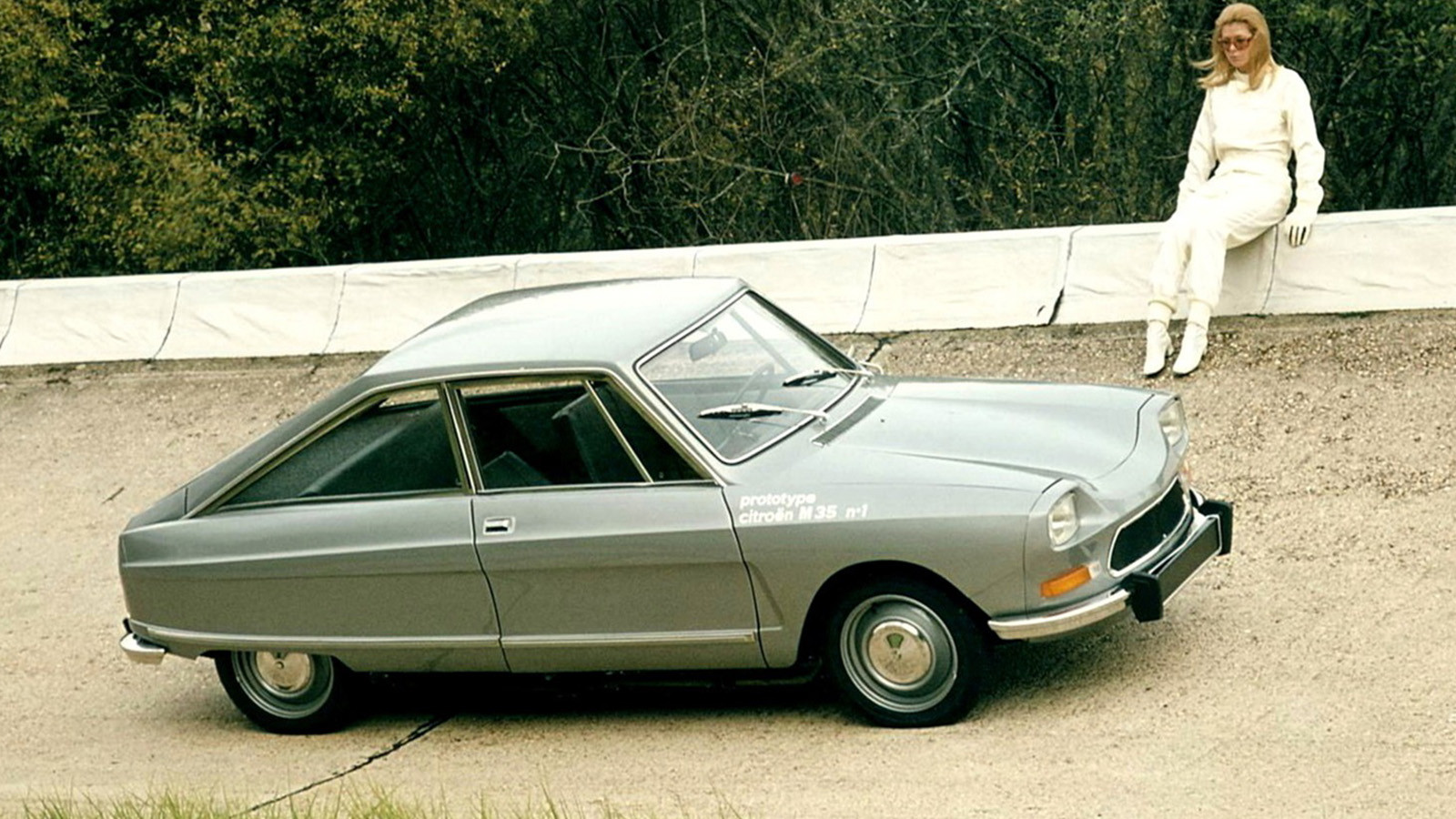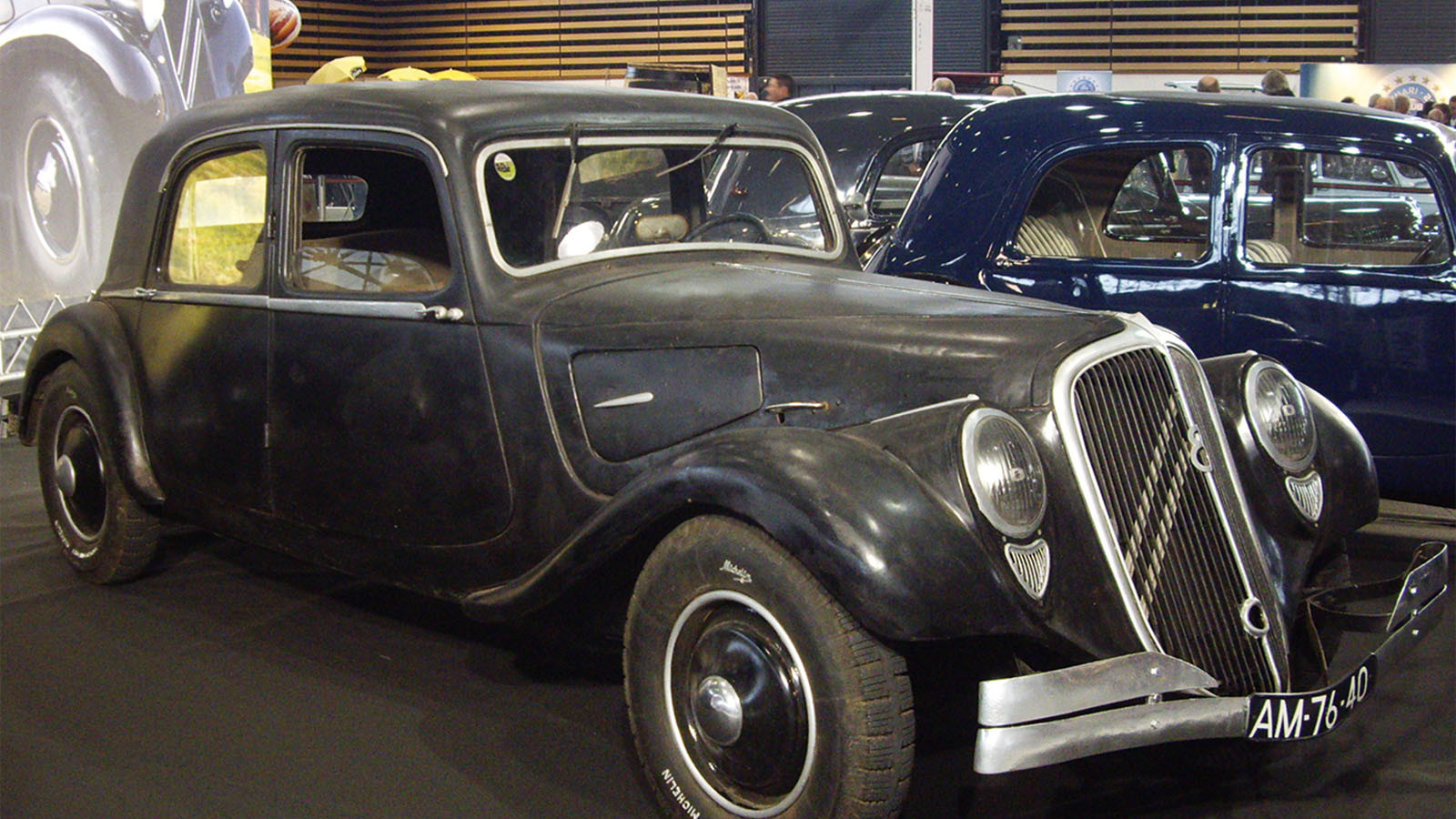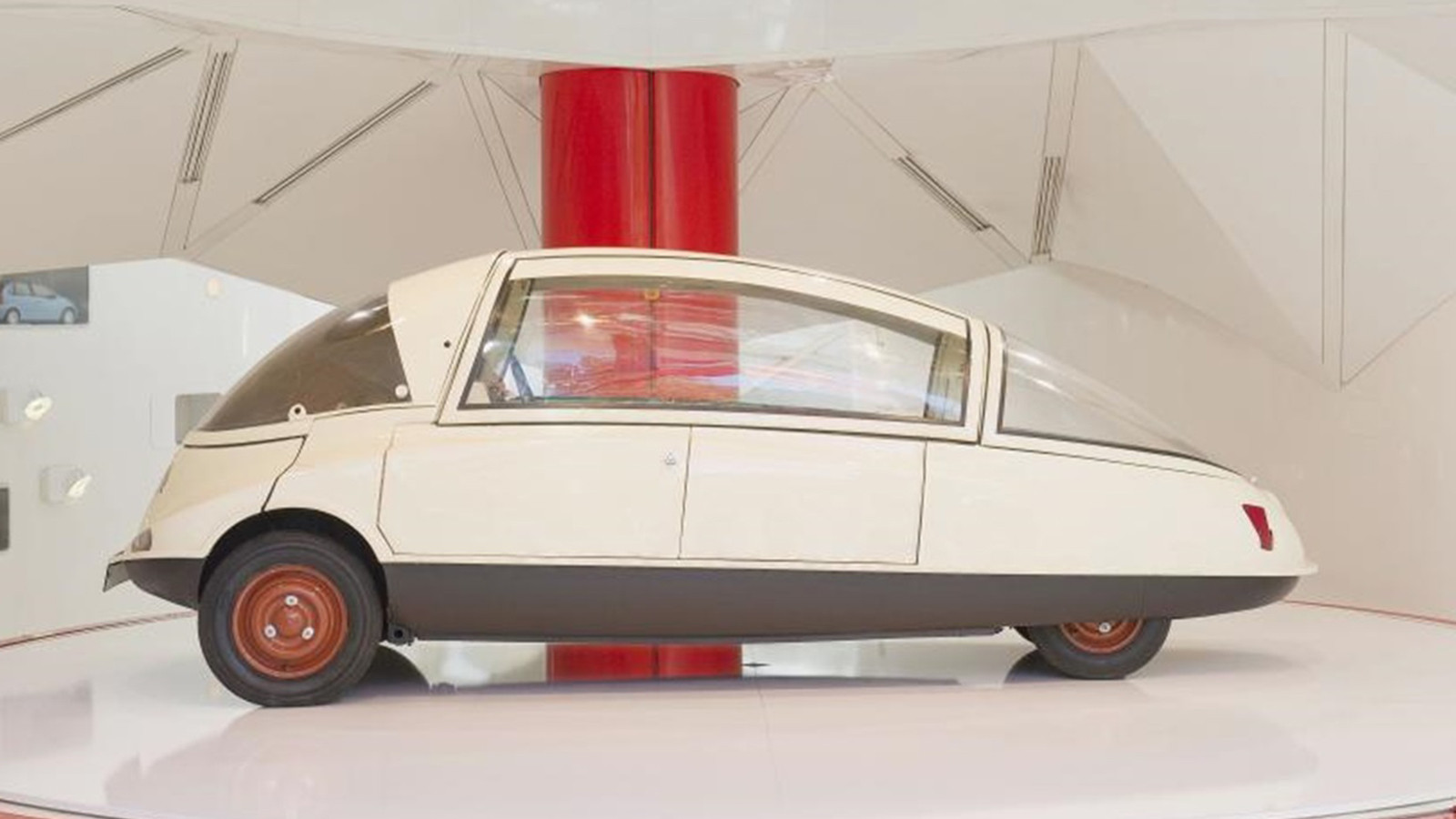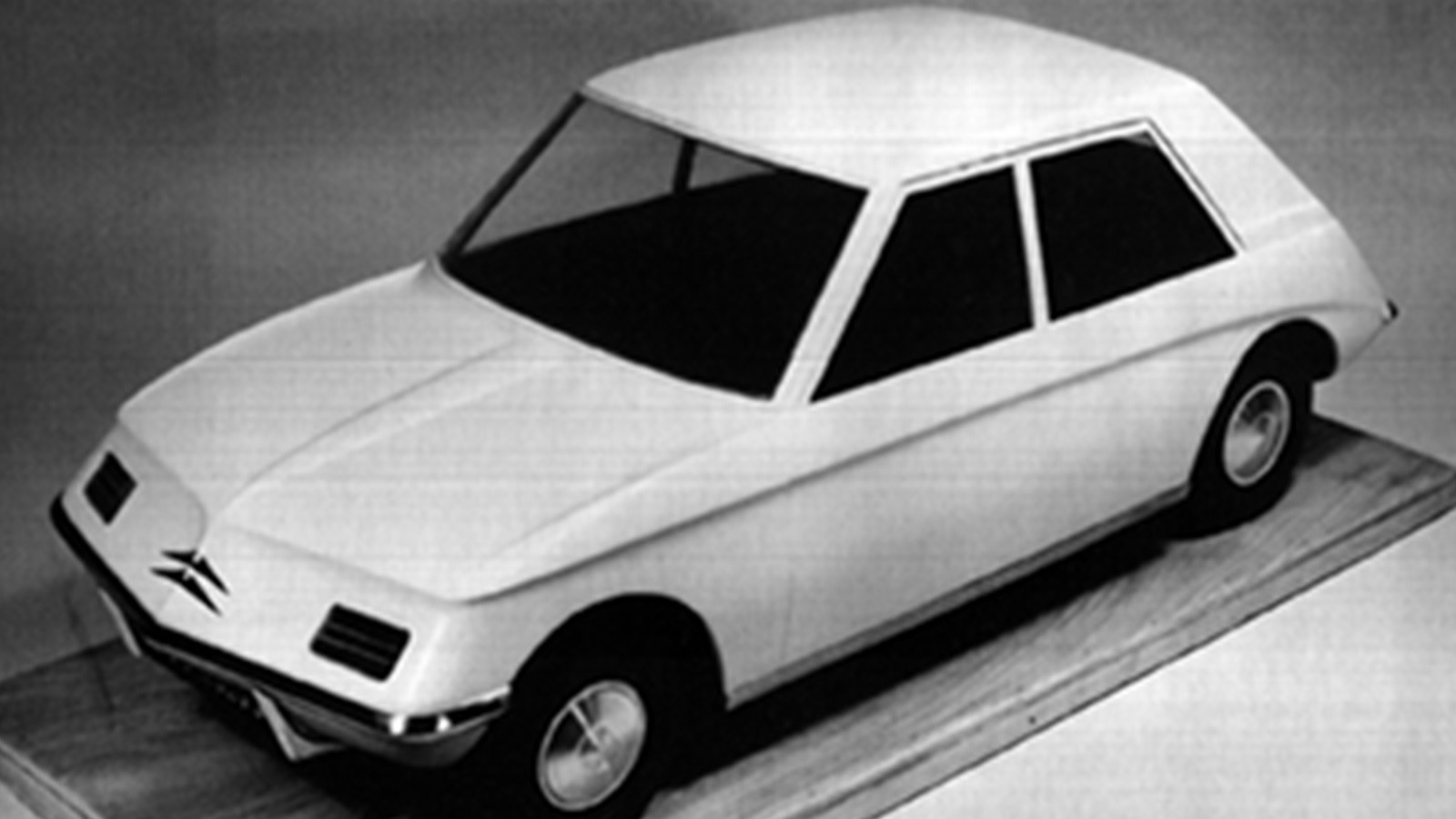-
 © Citroën
© Citroën -
 © Classic & Sports Car
© Classic & Sports Car -
 © Citroën
© Citroën -
 © Citroën
© Citroën -
 © Citroën
© Citroën -
 © Citroën
© Citroën -
 © Citroën
© Citroën -
 © Citroën
© Citroën -
 © Citroën
© Citroën -
 © Citroën
© Citroën -
 © Bellini.it
© Bellini.it -
 © John Bradshaw/Classic & Sports Car
© John Bradshaw/Classic & Sports Car -
 © Citroën
© Citroën -
 © Citroën
© Citroën -
 © Citroën
© Citroën -
 © Citroën
© Citroën -
 © Citroën
© Citroën -
 © Citroën
© Citroën -
 © Citroën
© Citroën -
 © Sbarro
© Sbarro -
 © Citroën
© Citroën -
 © Citroën
© Citroën -
 © Citroën
© Citroën -
 © Stellantis
© Stellantis -
 © Citroën
© Citroën
-
Citroëns that were so near, yet so far from production
Citroën has a long and justifiably proud history of building cars that many other manufacturers would suck their teeth at.
Yet even this bold French firm drew a line at putting some of its cars into production.
Here are some of the best, and not so great, Citroëns that didn’t make it beyond the drawing board, motor show or development phase.
From sports coupés to electric city cars, military vehicles to MPVs, the breadth of Citroën’s ambition is never in any doubt with the cars that never quite made it.
These models are arranged here in chronological order.
-
1. 1934 Citroën Traction Avant 22CV
Citroën looked set to give its advanced Traction Avant an engine that was as forward-thinking as the rest of the car with the announcement of its 22CV V8 model.
The 3.9-litre 22CV was shown to the public at the 1934 Paris Salon, though the bonnets of these cars were sealed shut.
It’s thought the engine was not ready and publicity shots of the engine in the car were of a wooden mock-up rather than a running motor.
The 22CV name came from the 3822cc V8’s power rating, which was double that of the 11CV Traction Avant.
After some prototypes were made, the project was halted by new company owner Michelin, on the grounds of cost.
-
2. 1956 Citroën C10
Taking its inspiration from a water droplet, the Citroën C10 was a bold glimpse at how a small family car could look, and maximised efficiency of space and performance.
Based on a 425cc 2CV platform, the C10 weighed only 382kg (842lb) and could reach 68mph thanks to its excellent aerodynamics.
Citroën said it had a drag coefficient of 0.258Cd, which was far lower than a standard small car of the mid-1950s.
The aluminium bodywork featured doors in two parts, with a large, single-piece, gullwing-style canopy that lifted up, while more conventional lower doors opened to give full access.
Much like the 2CV it was based on, the C10 had a pared-back interior with simple seating for four, and the two rear passengers were squeezed together due to the tapering shape of the C10.
-
3. 1960 Citroën C60
After deciding the C10 was too radical even for Citroën, the company was still on the lookout to create a car that could sit comfortably between the basic 2CV and the much more upmarket DS. This is where the C60 came in.
With styling that clearly previewed the Ami 6, the C60 was a more sophisticated machine than the Ami.
It was designed with hydropneumatic suspension like that of the DS and was touted as using either 1.1- or 1.4-litre, flat-four, air-cooled engines.
The interior had much more in common with the DS than the Ami 6 and offered plenty of space for four passengers.
However, the Flaminio Bertoni-styled C60 was shelved when costs began to rise and attention shifted to the more advanced Projet F.
-
4. 1963 Citroën Projet F
Still looking for that elusive middle car to sit between 2CV and DS, Citroën explored a number of themes with the Projet F.
The styling was again by Flaminio Bertoni from within Citroën’s own ranks, but it was much more conventional than the C60.
Under the skin, torsion-bar suspension was another break from the Citroën norm, though a base model was considered with the same engine as the 2CV.
Much more radical was a plan to use a Wankel rotary engine, but this was found to be unreliable and used too much fuel.
As a result, Citroën developed its 1130cc, air-cooled, flat-four engine that would go on to be used in the GS.
Citroën abandoned the Projet F very late in the day and the huge cost of development contributed to the company’s woes that led to its takeover by rival Peugeot in the 1970s.
-
5. 1964 Citroën DS Sport
If there was one area where the Citroën DS fell short, it was its four-cylinder engine that was carried over from the Traction Avant.
In an effort to address this, Citroën looked at various options and developed a 16-valve version of the existing motor.
With this engine under the bonnet, the DS could reach a top speed of 112mph compared to a standard DS’s maximum of 94mph.
To make the most of this performance, Citroën came up with a two-door coupé body to complement the new engine.
However, another motor was developed with a 2175cc capacity and had a similar output, and Citroen didn’t commit to production.
Instead, the Maserati-engined Citroën SM ended up as the sporting take on the DS.
-
6. 1965 Citroën Projet G-mini
By 1965, the 2CV had been on sale for 17 years and Citroën was looking for a replacement.
The G-mini was an idea from Robert Opron, and was very advanced in its monobox shape and features such as flush-fitting headlights and clap-hands wipers.
Large doors gave good access to the front and rear seats, while a hatchback rear was very unusual for the time and some way before the Renault 5 would make this part of its appeal.
Power for Citroën’s G-mini was set to be the 2CV’s flat-twin engine, but the G-mini did not go down well when shown to early customer focus groups.
As a result, it was not taken any further, though ideas from his car can be seen in the Visa that followed.
-
7. 1969 Citroën M35
Citroën went as far as building 267 M35s and invited the motoring press to try the car in 1969, yet it was never made available for the public to buy.
The M35 was seen as a test-bed for more advanced hydropneumatic suspension and also for another trial of a Wankel rotary engine.
As a result, some hand-picked drivers were chosen to try the M35 and report back.
What they received was a handsome, two-door coupé version of the Ami 8, with the body built by Heuliez.
The 498cc rotary engine could take the car to 90mph, as well as offering far better acceleration than the Ami 8’s usual 1015cc unit.
Sadly, the M35 remained a prototype, though a good proportion of the cars still survive.
-
8. 1971 Citroën VLH M7
While the Citroën 2CV had spawned the Sahara and Méhari off-road versions, the GS was not seen as the base for a go-anywhere model until Heuliez came up with the VLH M7.
Designed with the French military as its target buyer, Heuliez and Citroën worked to create a 4x4 that took drive from the back of the gearbox to the rear wheels.
Raised suspension was simpler to achieve by increasing ride height using the GS’s hydropneumatic set-up.
A single prototype was built and tested, but the decision was taken to put development funds into the mechanically simpler Peugeot P4 light military vehicle.
-
9. 1972 Citroën GS Camargue
If the Citroën SM was too expensive for most buyers, a more affordable coupé made a lot of sense and the GS Camargue looked at this attractive idea.
Using the GS platform as its base, the Camargue had a body styled by Marcello Gandini, who was working at Bertone.
He came up with a swooping shape and 2+2 seating, and a running, driving car was ready for the Geneva motor show in 1972.
Using the GS engine and mechanical parts, it should have been a simple step to move the Camargue towards production, but Citroën’s coffers were not able to fund the project any further.
-
10. 1972 Citroën Kar-a-Sutra
If you could look past the cheeky name of this one-off Citroën, it had more to offer than just a pun for its name.
Long before MPVs of the 1980s offered large cabins, the Kar-a-Sutra took a DS as its base and extended the width to a huge 7ft (2.13m) across.
That allowed the car’s occupants to lounge on seats that turned into beds.
Another feature of the Citroën Kar-a-Sutra was a roof that could be raised from a low-riding position when being driven to a much greater height when it was being used as living room.
Italian architect Mario Bellini was behind the design, but it’s not clear if the Kar-a-Sutra ever moved under its own power.
-
11. 1973 Citroën GS Birotor
This is one exception, because this car did make production, but Citroën soon wished it hadn’t.
Citroën quickly regretted its decision to release the GS Birotor and tried to buy back all of these Wankel-engined cars.
The motivation for this was it did not want to look after them or have its poor reliability damage the company’s reputation.
The result was the Birotor is now hugely sought after by collectors keen to experience the twin-rotor engine in the smooth-riding GS.
The motor was jointly developed by Citroën and NSU as the Comotor project, and the GS used a three-speed, semi-automatic gearbox. It also came with a more opulent cabin than a standard GS.
However, the rotary engine’s poor fuel economy and oil consumption, plus its terrible reliability, led to Citroën trying to erase it from memory.
-
12. 1974 Citroën 2V Super
Given the Citroën 2CV was already 26 years into its production life, it seems strange to think nowadays that its maker thought it needed to add a retro version of the car to its ranks.
This is what the 2CV Super aimed to do, with its front grille that harked back to the Traction Avant and dummy hood irons on the rear three-quarters.
The roof was made from metal, so it could not be rolled back as with a standard 2CV, while power came from a GS flat-four engine.
Yet even with these refinements, the Super was quickly deemed unnecessary and any plans for production were shelved.
-
13. 1980 Citroën Karin
The Citroën Karin was both a pure show car for the 1980 Paris Salon and some major hint-dropping from the car maker about its design style for the decade ahead.
Penned by Trevor Fiore, the Karin looked like a pyramid on wheels with its steeply sloping front and sides.
This opened to reveal a three-seat cabin, with the driver located centrally and the two passengers placed lower down on either side.
So far, so show car. However, the front end of the Karin gave a clear indication of how the BX would look, while inside the Karin’s steering-wheel controls pointed to what we would eventually see on the XM.
There was no mechanical specification for the Karin, because it was never intended to be a driving car.
-
14. 1980 Citroën Projet E
Often regarded as the last great Citroën design project, the Projet E was unceremoniously binned by the company’s PSA bosses, when it was viewed and seen as too quirky and expensive to produce.
The reason for this is design boss Jean Giret went ahead on his own initiative to create a successor to the CX.
The styling was along the lines of a larger BX, but with an innovative tailgate that could be opened as a saloon-style boot or as a hatch.
While the Projet E never saw the light of day again, luckily Citroën’s eventual replacement for the CX was the still left-field XM that arrived in 1989.
-
15. 1981 Citroën Xenia
Citroen’s Xenia was very much along the lines of many concept cars from the 1980s in its aerodynamic approach to design.
Making the most of the style, Citroën’s Trevor Fiore penned the Xenia as a large monobox ‘break’ estate car.
Aping the C10 of 1956, the Xenia came with large one-piece ‘butterfly’ doors either side that gave access to both the front and rear seats.
A large glass area helped brighten the cabin, while Citroën went for broke on the technology side with a mass of buttons behind the steering wheel, solar cells to power air conditioning, and sensors to check all manner of driving functions.
-
16. 1984 Citroën Eco 2000
Clear overtones of the Citroën AX that arrived in 1986 can be seen in the Eco 2000, which made its debut in 1984.
With a focus on making a car that was as economical as possible, and with French government funding to help, Citroën designed the Eco 2000 to be capable of 100km (62 miles) on two litres of fuel, which is the equivalent of 141mpg.
Much of this was achieved with the Eco 2000’s aerodynamic styling, with a drag coefficient of just 0.22Cd.
Minimal weight also helped and the car tipped the scales at a mere 450kg (992lb), while power initially came from the Fiat Panda’s three-cylinder 750cc motor.
Citroën also experimented with a rear-mounted, twin-cylinder engine.
Hydropneumatic suspension was used so the Eco 2000 could sit lower to the ground at high speeds to improve its aerodynamics and reduce fuel consumption.
-
17. 1986 Citroën Eole
Presaging how the car-design process would develop, the Eole from Citroën was designed solely using computers.
There were no paper sketches or clay models to refine its shape, and all of this led to an extremely aerodynamically efficient car with a Cd of just 0.17.
Enclosed wheels helped, which gave hints to how the XM would look.
Another feature of the Eole that went on to be used in the XM and the Xantia was its active suspension, which used hydropneumatics to virtually eliminate body lean in corners.
This became known as the Hydractive system in the XM and was electronically controlled.
-
18. 1986 Citroën Zabrus
Citroen’s foray into Group B rallying with the BX 4TC was far from successful, not helped by the car arriving as this form of rallying was set to be outlawed.
What to do with a spare BX 4TC, then? Step forward Bertone with its plan for a BX coupé.
Using the BX 4TC’s underpinnings, Bertone stripped off the muscly rally body and replaced it with a sleek, low-slung, two-door shell.
Called the Zabrus, the coupé was neatly detailed. With the exception of the scissor doors, it looked ready for limited production using the remaining BX 4TCs lying around.
With a 2.1-litre, turbocharged, four-cylinder engine and all-wheel drive, the Citroën Zabrus had a top speed of 137mph.
The cabin offered space for four and the front seats swivelled to give easier access to get in and out.
However, attractive as it was, the Zabrus remained a one-off.
-
19. 1986 Sbarro Citroën Aventure
Sbarro was famous in the 1980s for its wild show cars and one-offs based on Ferraris and Porsches.
However, the Swiss firm also turned its attention to the more humble Citroën C15 van to create the Aventure.
As the name suggests, this was a car designed as a lifestyle vehicle before that term was coined for more SUV-based machines.
The Aventure made the most of its interior space with two front rows of seats, plus fold-down jump seats in the back to make the car capable of carrying seven people.
In true Sbarro style, the interior was trimmed in leather, wood and thick-pile carpet, while the exterior was heavily reworked to disguise the humble C15 underneath.
Sbarro even went as far as using a CX windscreen to make the Aventure more appealing, but only one was ever built.
-
20. 1988 Citroën Activa
The Citroën Xantia was still four years off production when the Activa was unveiled at the 1988 Paris motor show.
Yet the clean lines of the Xantia were there to see in this four-door saloon show car, even if the rear-hinged back doors and pillarless style would not see the light of day.
The Activa name for this car referred to its clever Hydractive suspension that would make its debut the following year on the XM. It allowed for near-flat cornering while retaining the supple ride that Citroën was famed for.
Citroën also built the Activa 2, which was a clear hint at an XM coupé and was shown at the Paris show in 1990.
Unfortunately, it was not deemed sufficiently commercial to put into production.
-
21. 1992 Citroën Citela
Citroën anticipated the current move towards electric cars with its Citela of 1992.
It was designed primarily for urban use, as the name points to, but had a top speed of 67mph to allow it to travel as far as its 130-mile (209km) battery range would permit.
The batteries were nickel-cadmium rather than the lithium-ion batteries of today’s EVs, but Citroën reckoned the pack had a 10-year life expectancy.
It also claimed the Citela’s electric motor and drivetrain were capable of lasting for up to 625,000 miles (c1,005,800km).
As well as the Citela’s EV power, the body could be converted from hatch to pick-up or even a fully open cabin to make it as versatile as possible.
Citroën planned a pilot scheme in La Rochelle for 1993 that made it the first city with publicly available electric charge points, but the model used for this was the AX Electrique.
-
22. 1994 Citroën Xanae
It doesn’t take a lot of imagination to see how the Citroën Xanae led to the company’s Xsara Picasso that was launched in 1999.
It’s a shame, though, that some of the Xanae’s boldness was lost in the translation.
While it would be unlikely that the Xanae’s rear-hinged back doors would make production, the front passenger seats that could turn through 180 degrees were a great feature – with the seats rotated, the Xanae’s cabin took on a lounge-like feel.
One element that did, eventually, make production, was the Xanae’s sweeping windscreen that stretched into the roof. Citroën used this on the later C3 and C4 Picasso models.
-
23. 1995 Citroën Tulip
Citroën’s Tulip looked set to outsmart the Smart car by a few years as a compact city car.
It was launched as a trial in the French city of Tours, with the Tulip available as an electric two-seat car you could rent as and when you needed it. The idea was to share the cars rather than owning your own vehicle.
Users of the scheme were issued with a remote control they used to book the car and unlock it, and the control doubled as a mobile phone.
Power for the Tulip was from Citroën’s AX Electrique, while the car was built with a sandwich floor, the battery sitting under the passenger cabin. On a full charge, the Tulip offered a 50-mile (80km) range and a top speed of 44mph.
The same car was also badged as a Peugeot, yet also called the Tulip, which is what is pictured here.
-
24. 1996 Citroën Berlingo Coupé de Plage
Citroën claimed the Berlingo Coupé de Plage had styling inspired by its ZX Rallye Raid car.
That was a bit of a stretch, but the Coupé de Plage’s big appeal lay in the versatility of its rear body.
It could be used as a pick-up or there were two fitted deckchairs for trips to the beach, which is what its name suggested was the purpose of this car.
However, there were no fixed rear seats, so it was strictly fun for two people.
The idea of a car that could be converted for different uses was revisited when Citroën offered the C3 Pluriel as a production model from 2003, but Škoda outdid the Coupé de Plage with its Felicia Fun.
